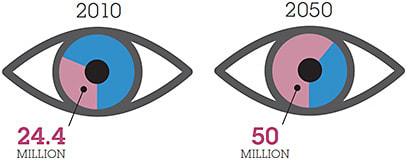Optometrists have the knowledge and skillset to both identify and treat dry eye disease (DED) before referring a patient for cataract surgery, but some aren’t making it a priority: “It is an indictment on optometry,” asserts Eric Schmidt, O.D., F.A.A.O., president of Omni Eye Specialists in Wilmington, N.C.
When a surgeon diagnoses DED post-referral, that doesn’t look good to the referred patient, notes Stuart Kaplan, O.D., of Tyson Eye in Cape Coral, Fla. He adds that the O.D.’s participation here is particularly important when it comes to premium IOL implantation.
“With premium lenses, the impact of DED is significantly more profound because the optics are so much more finicky,” Dr. Schmidt explains.
Sondra Black, O.D., Head of Professional Strategy Surgical Americas, for Johnson & Johnson, adds: “Even if there’s not a refractive change, the patient is still going to be uncomfortable or have fluctuating vision after surgery,” making the identification and treatment of the condition paramount.
Dr. Kaplan emphasizes that DED is the optometrist’s forte, so O.D.s should be “aggressive in screening patients.” OM
CATARACT: NEI LOOKS AHEAD
Between 2010 and 2050, the estimated number of people who have or have had cataract will double from 24.4 million to 50 million.

Each eye chart represents a total of 80 million people, the estimated number of Americans who will be 65 and older in 2050, the population most affected by common eye diseases.
For more information on eye disease, visit nei.nih.gov/health .




